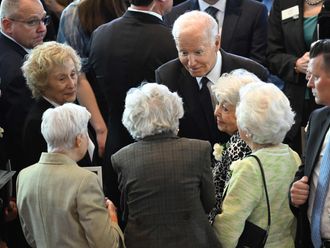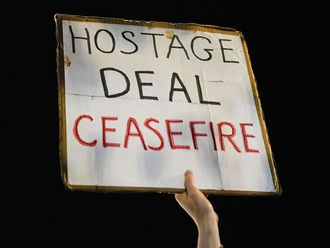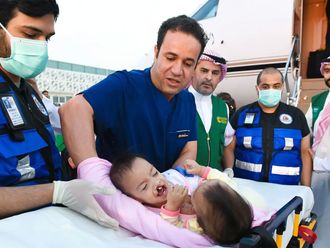Ramallah: Alarming statistics released by the Palestinian Central Bureau of Statistics show that elderly people represented only 4.4 per cent of the total population of the Palestinian territories in mid 2013.
Generally, the Palestinian territories have witnessed an improvement in life expectancy of about five to seven years during the last two decades. During this time, the life expectancy of both males and females rose — from 67 years in 1992 to 71.5 years in 2013 for males and to 74.4 years for females.
This pattern is expected to continue with male life expectancy tipped to reach 72 years and that for females to reach 75 years in the year 2015.
The data about numbers of elderly people (those 60 and over) was presented by the Palestinian Central Bureau of Statistics on the occasion of the International Day of the Elderly on October 1.
Palestinian society is considered a young society as youth make up about half of the society while the percentage of the population that is elderly is relatively small. In mid 2013, the percentage of the population classed as elderly reached 4.8 per cent in the West Bank and 3.7 per cent in the Gaza Strip.
Even though these percentages will increase in the coming years, the percentage of the Palestinian population made up by the elderly will remain relatively low and not exceed 4.5 per cent during the upcoming 10 years. The percentage of the population made up of the elderly may start increasing more significantly after 2020.
In gender terms, the percentage of males (aged 60 and over) in the Palestinian territories reached about 3.9 per cent in 2013 against 4.9 per cent for females.
The percentage of households headed by an elderly person in the 2nd quarter of 2013 reached 15.7 per cent in the Palestinian territories (17.1 per cent in West Bank and 13.2 per cent in Gaza Strip). The data indicates that the average size of a household headed by an elderly person is relatively small with 3.5 individuals involved compared with 5.9 individuals in a household not presided over by an elderly person.
About 91.6 per cent of elderly males in the Palestinian territories are married against 44.4 per cent of elderly females. The percentage of elderly widowed males reached 8.3 per cent against 48.1 per cent for females in the 2nd quarter of the year 2013.
Data indicated that there was a high percentage of illiterate elderly in 2012. The percentage of the elderly who had not completed any educational stage was 54.8 per cent (34.6 per cent males and 71.1 per cent females), while the illiteracy rate for the elderly was 37.7 per cent of the total elderly persons.
Therefore the illiterate elderly represent about 68.1 percent of the illiterate persons in Palestine.
Data on illiteracy in 2012 indicated that there is an obvious difference between males and females in terms of education received as the percentage of elderly males who had obtained a diploma or higher was 17.7 percent against 5.1 per cent for elderly females.
As a comparison, the illiteracy percentage of individuals aged 15 and over in Palestine does not exceed 4.1 per cent (1.8 per cent males against 6.4 per cent females). The percentage of individuals (aged 15 and over) who has obtained diploma and higher reached 16.9 per cent of total population aged 15 and over in Palestine (17.4 per cent males and 16.4 per cent females).












